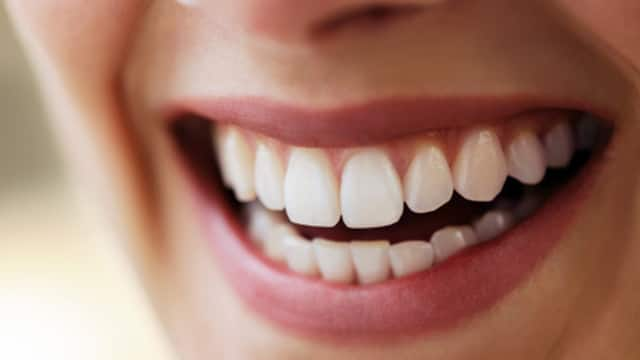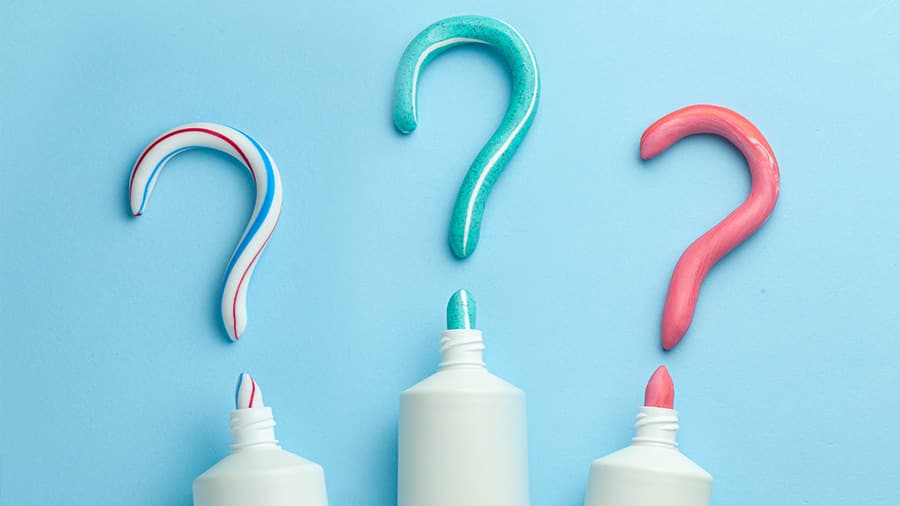How Does Teeth Whitening Foam Work?
Teeth-whitening foam is a simple dental product designed to brighten teeth by reducing stains and discolouration, offering a convenient and affordable solution for achieving a whiter smile at home. When it comes to the workings of a teeth-whitening foam, the product usually contains active ingredients that penetrate your tooth enamel, breaking down stains for even coverage and uniform results. Its easy-to-apply consistency ensures thorough coverage, allowing the active whitening agents to penetrate enamel effectively.
While teeth-whitening foam functions similarly to toothpaste, the primary difference lies in its mode of application. When dispensed, tooth foam emerges as a fluffy foam, unlike toothpaste, which foams in the mouth upon application. However, both teeth-whitening foam and toothpaste share a similar mode of action in terms of their function.
How to Use Teeth Whitening Foam?
Many individuals opt for teeth-whitening foam as a convenient method to brighten their smiles in the comfort of their homes. It is commonly used by many due to its convenience in brightening smiles and teeth cleaning without needing professional assistance. Below are the common steps for using a teeth-whitening foam:
Getting ready: Start by making sure your teeth are clean. Most people brush their teeth with regular toothpaste first to remove any dirt.
Applying the foam: Typically, a small amount of teeth-whitening foam is applied to a clean toothbrush or directly onto their teeth, ensuring not to use too much.
Spreading it evenly: After applying, gently brushing the foam onto all teeth is practised, focusing on covering them evenly. Some pay more attention to areas that appear stained or darker.
Waiting time: It is common to follow the instructions on the package regarding how long to leave the foam on the teeth for better results.
Rinsing off: Once the recommended time has passed, rinsing the mouth thoroughly with water is practised to remove all traces of the foam.
Is Teeth Whitening Foam Safe?
Teeth-whitening foam is generally considered safe when used as directed on the package or as your dental professional suggests. It usually contains active ingredients like hydrogen peroxide to whiten teeth. However, it is essential to follow the instructions carefully to avoid using too much, which could make your teeth sensitive or irritate your gums.
If you are worried about using teeth-whitening foam, it is a good idea to talk to your dentist first. They can give you advice and guidance based on your specific dental needs and overall oral health.
Benefits of Teeth-Whitening Foam
Teeth-whitening foam may offer several advantages, making it a popular choice among individuals seeking a brighter smile. Known for its ease of use, teeth-whitening foam offers many advantages. Here are some of the key benefits:
Convenience: Its foam texture ensures even application and makes it easy to use, seamlessly fitting into daily oral care routines.
Gradual Whitening: Teeth-whitening foam often provides a more gradual and subtle whitening effect.
Stain Removal: Constant use of teeth whitening foam may actively break down stains for deeper removal compared to other options.
Precautions and Considerations
Teeth-whitening foam offers several advantages, yet it is important to proceed cautiously, particularly for sensitive teeth. While it effectively removes stains, brightens teeth, and combats bad breath, there are important precautions to note. Here is what to keep in mind:
Proper usage: Following the manufacturer's instructions carefully is crucial to avoid any problems like gum irritation or uneven whitening.
Compatibility: Certain individuals might have allergies or sensitivities to ingredients in teeth-whitening foams. Doing a patch test before applying the product to all teeth is a smart move.
Consultation: If you have any existing dental issues like cavities, gum disease, or dental work such as dentures, crowns, and veneers, it is vital to consult a dentist before using teeth-whitening foam.
Other teeth-whitening products are available on the market as alternatives to teeth-whitening foam, including whitening foam mouthwash, whitening pens, teeth-whitening kits, teeth-whitening liquid, and teeth-whitening foam toothpaste, among others. Teeth whitening toothpaste emerges as a superior option for achieving bright, white teeth. In addition to the standard functions of toothpaste, such as providing fresh breath, fighting germs, and promoting clean gums, teeth whitening toothpaste primarily aims to whiten your teeth.
If you are looking for a teeth-whitening toothpaste for whitening your teeth, you may consider using Colgate Visible White O2 Teeth Whitening Toothpaste for noticeably whiter teeth starting in 3 days. This new whitening formula with millions of active oxygen bubbles lightens the stains on the teeth, working not only on the surface but from the inside out. Colgate Visible White O2 gives off a warming effect inside your mouth and releases a gentle wave of ultra-fine whitening foam (the active oxygen).
To sum up, teeth-whitening foam may offer a convenient solution for brightening your smile at home. Understanding how it works, its safety measures, and its proper usage may help you decide if it is the right choice for you. While it gradually whitens teeth, freshens breath, fights germs, and removes stains, it is important to be cautious, especially if you have sensitive teeth, and seek advice from a dentist if needed. Exploring alternative options, like whitening toothpaste, is also worth considering, as it gently whitens your teeth and gives you whiter teeth.
Frequently Asked Questions
- Does teeth whitening foam work?
Teeth-whitening foam is considered an effective and affordable way to restore your teeth's natural whiteness. It contains active ingredients, and it works by breaking down and lifting stains from your tooth enamel, giving you a brighter smile. - Is teeth whitening foam safe to use?
Teeth-whitening foam is generally considered safe, but it can cause tooth sensitivity and gum irritation if used improperly or excessively. It is important to follow the manufacturer's instructions and not exceed the recommended usage. - How long does it take to see results with teeth-whitening foam?
Usually, the whitening process will begin immediately, with visible results after 2-3 weeks of daily use of the teeth-whitening foam. - How often should I use teeth whitening foam?
You may follow the instructions in the product package or get a piece of advice from your dental professional about using a teeth-whitening foam.
This article is intended to promote understanding of and knowledge about general oral health topics. It is not intended to be a substitute for professional advice, diagnosis or treatment. Always seek the advice of your dentist or other qualified healthcare provider with any questions you may have regarding a medical condition or treatment.
ORAL HEALTH QUIZ
What's behind your smile?
Take our Oral Health assessment to get the most from your oral care routine
ORAL HEALTH QUIZ
What's behind your smile?
Take our Oral Health assessment to get the most from your oral care routine













